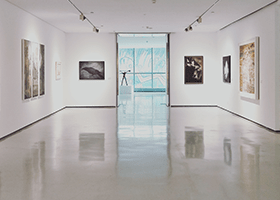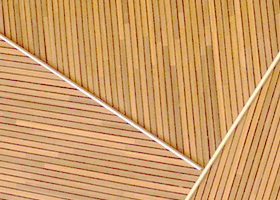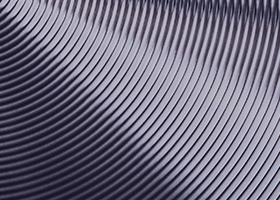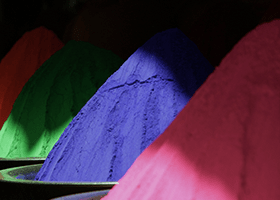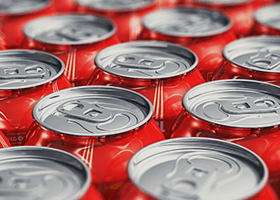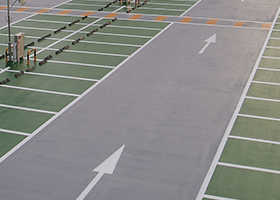| Swelling |
|
This is when the air or moisture trapped inside the concrete surface beneath the painted layer escapes the concrete and the paint at high pressure, causing the painted layer to rise. It occurs when the base coat fails to fill in the pores in the concrete surface and/or when there is excessive moisture under the painted layer. |
| Cracking |
|
Cracking, alligatoring, or checking refers to breakup of the painted layer, which can occur due to a poor or erroneous mixing of the paints, when the top coat and the base coat dry at different speeds, when a top coat containing a volatile solvent was applied over a base coat that had not yet completely dried, when a top coat or a final coat was applied over a cold surface in cold weather, when a hard top coat was applied over a soft base coat, or when the concrete surface underneath the paint itself cracks. |
| Floating |
|
Floating refers to the color of the painted layer looking different from the color beneath it or when the top coat shows different colors in different parts. Floating occurs when the pigments were not mixed well with the rest of the paint, causing the pigment parties to recoagulate, when the pigment particles used differ significantly in size and weight, when the solvents used with the paint evaporate at different speeds, or when the paint was diluted too much, causing convection within the painted layer as the solvent evaporates and generates heat in the process. |
| Pinholes |
|
Pinholes are created as the wet paint dries and causes the solvent or the air that had been trapped underneath it to escape through tiny holes. Pinholes can occur in a top coat applied over a porous (inorganic zinc) base coat, in a top coat that has been applied to a base coat that already had pinholes, when the paint is applied to too hot a surface in hot weather and therefore dries up too quickly (or the solvent used with it evaporates too quickly), or when too thick a layer of paint was applied at once (either using a paint roller or a spray gun that was held too close to the treated surface and/or had air pressure inside that was too high). |
| Orange peel |
|
This is when the painted surface is not smooth, but becomes uneven like the peel of an orange. It can occur when the paint used is too thick (viscous), when the paint has been mixed with too volatile a thinner, when the spray gun used to apply the paint was held at too close a range to the treated surface, when the air pressure was too high inside the spray gun, when the painting was done on too hot a surface in hot weather, or when there was strong wind blowing at the time the paint was applied. |
| Gelation |
|
Gelation is when the paint loses its liquidity and turns solid inside the paint can. This usually occurs in two-component paints when they go past their pot life. Mixing and diluting the gelled paints with a thinner does not return them to their previously liquid state. |
| Skinning |
|
Skinning occurs when the top of the paint dries and forms a membrane over the rest of the paint in the paint. It can occur when the paint has been kept in storage with its lid open (as the solvent in a single-component paint evaporates or, in the case of an oxygen polymerization paint, as the paint reacts to oxygen in the air). Using a highly volatile and weak solvent or thinner, the insufficiency of the anti-skinning agent used in manufacturing the paint, or the excessive use of drying agents can all cause skinning as well. |
| Settling/caking |
|
The pigments of a paint can separate from the vehicle and sink to the bottom of the can. Settling or caking most likely indicates that the pigments have solidified, most often as a result of the unused paint passing its expiry date. Diluted (less viscous) paint kept in storage, paint mixed with solvents or thinners that cannot dissolve paint, and paint using certain mixtures of pigments and vehicles can undergo settling or caking. |
| Sagging |
|
Wet paint applied over vertical spaces can sag when the applied layers are too thick (particularly where it has been layered on and/or applied to corners), when excessive amounts of thinner have been used, when the temperature is too high or too low and slows down evaporation of the thinner, when the two-component paint used is past its pot life, and/or due to a lack of skill on the part of the painter. |
| Cratering (hajiki) |
|
Craters may form on a painted surface when the treated surface has been contaminated by oily and/or silicone-containing substances. Cratering can also occur when paint is applied on top of a low-layer urethane or epoxy lining. |
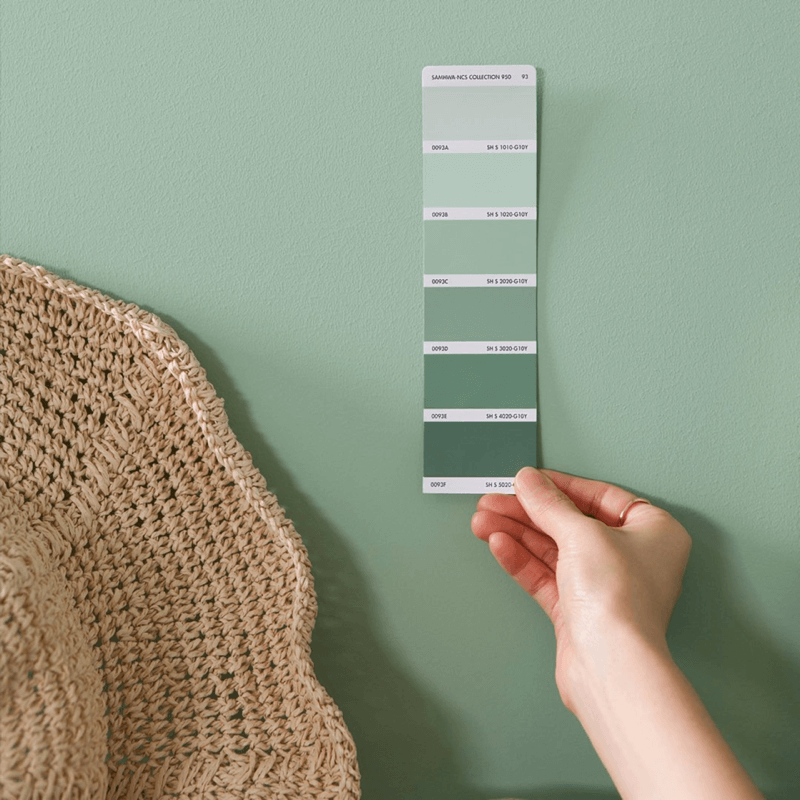 Wall paint
친환경 벽지 페인트
Wall paint
친환경 벽지 페인트

